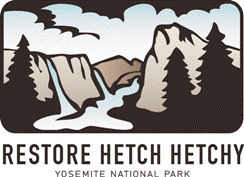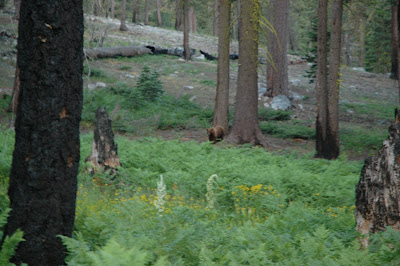Fact vs. Fiction: Restoration Of Hetch Hetchy Valley in Yosemite National Park
It was great to hear Mike Marshall, Restore Hetch Hetchy Executive Director, and Congressman Dan Lungren on KQED radio today discussing the opportunity to restore Yosemite National Park’s second great valley with host Michael Krasny.
The show is posted on KQED’s website and is definitely worth a listen: http://www.kqed.org/a/forum/R201112210900
Ed Harrington, general manager of the San Francisco Public Utilities Commission, and Jim Wunderman, president and CEO of Bay Area Council, presented the opposing view that the reservoir should be left in place. These men raised a number of valid issues that must be addressed.
But Wunderman and Harrington also misrepresented a number of fundamental facts about the existing system and what restoration would involve. These misrepresentations include:
Fiction: All 400 MW of San Francisco’s hydroelectric power would be destroyed.
Fact: The truth is that all three of San Francisco’s hydroelectric power plants would still be operational and only the Kirkwood plant would generate significantly less power during late summer and fall when the Tuolumne River’s natural flow is low. Modeling studies suggest only 20% of San Francisco’s hydropower would be lost, certainly not all of it.
Fiction: San Francisco and its customers have just invested 4 billion dollars in this system to make it seismically safe and this money would be wasted if restoration takes place.
Fact: This investment pertains to retrofits in the Bay Area that have little to do with the water that San Francisco stores in the Sierra Nevada. Restore Hetch Hetchy has supported the retrofit and encouraged other environmental groups to do so as well. This is money well spent but is a separate issue from restoration.
Fiction: The California Department of Water Resources said restoration would cost 10 billion dollars.
Fact: DWR actually said it could cost as little as 3 billion dollars or as much as 10 billion dollars. And even the lower estimate of 3 billion dollars included enough additional water supply to replace the relatively small amount that would be lost several times over.
Fiction: Restoration would put the region at risk in huge ways.
No one has proposed that restoration of the valley take place until facilities to provide equivalent water and power to those who use it are in place and operational.
Fiction: The Bay Area would go to the bottom of the list in terms of water rights.
Fact: Restoration would not affect anyone’s water rights to the Tuolumne River. All it means is that the water would not be stored in Yosemite National park.
Fiction: The Bay Area would not have sufficient water in 1 out of 5 years.
Fact: In one out of five years some water would need to be replaced. In most years, San Francisco’s other 8 reservoirs and water rights on the Tuolumne would provide full supplies while allowing ample reserves.
Fiction: 85 % of San Francisco’s water is stored in Hetch Hetchy Reservoir.
Fact: Hetch Hetchy Reservoir stores only about 25% of San Francisco’s water.
Fiction: It would take a huge amount of energy to pump the water to San Francisco if Hetch Hetchy Valley were restored.
Fact: Water would still be diverted at “Early Intake”, on the Tuolumne River just below Yosemite National Park, and would flow from there to the Bay Area under gravity. Very small amounts of energy would be required in some parts of the system, as it is now.
Fiction: Hetch Hetchy Reservoir was required because San Francisco ran out of water to fight the fire following the 1906 earthquake in San Francisco.
Fact: San Francisco had plenty of supply in local reservoirs in 1906. The problem was that pipes within the city broke during the quake.
Fiction: Restoration would bring tremendous risk and harm to the region.
Fact: The amount of water and power at stake are not large, but are far less than has been replaced in other environmental restoration projects around the State. And restoration will not take place until replacement facilities are in place.
Restore Hetch Hetchy understands and respects that many people have other priorities and do not support restoration. We believe, however, that the debate over restoring Hetch Hetchy Valley in Yosemite National Park is worth having. And we ask our opponents to stick to the facts.
Interested persons can learn more about these issues by reading the plethora of reports posted at http://www.hetchhetchy.org/resources.

















